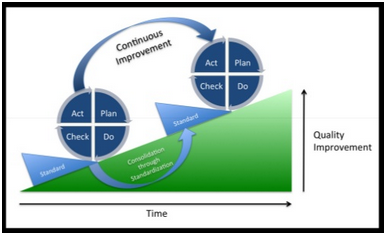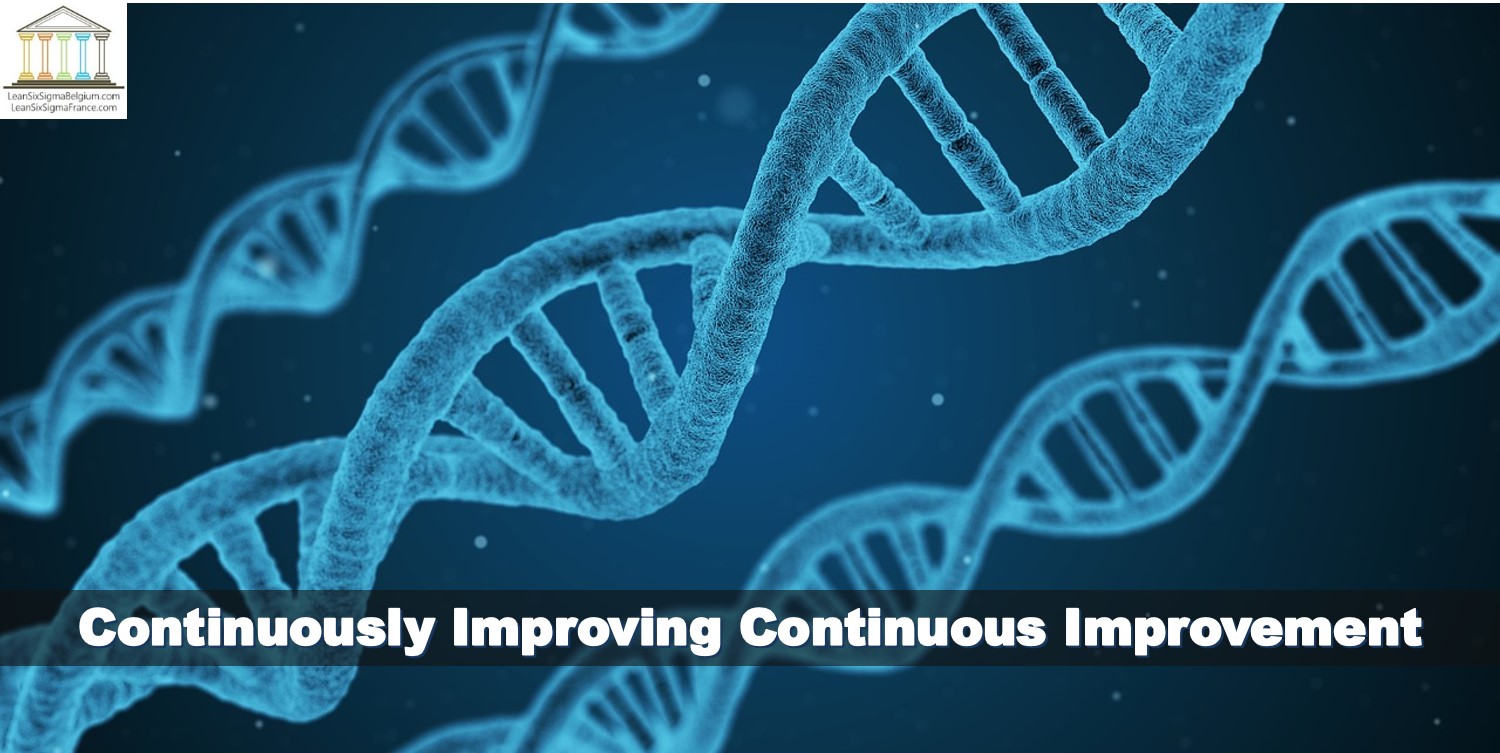For as long as there have been companies and managers, there have been schools of thought on how to do business better. Over the past two centuries, this has moved from pushing more people onto the factory floor regardless of safety, to a more nuanced approach of identifying individual skills and capitalizing on the immediacies of communication and collaboration. Work and industry are far more fascinating and sophisticated than in any other time in history, and it’s not stopping.
The greatest and most influential management philosophies are themselves prone to the same sort of change as the industries they seek to influence. Like Deming’s famous continuous improvement analogy of rolling the wheel uphill, any management theory focused on continuous improvement must commit itself to being refined and improved at a rapid pace.
In his 2017 article, The Continuous Improvement Leader: Engaging People for A Digital Age, writer Zachary Surak points out how genuine progress in continuous improvement and lean management techniques have effectively closed the quality gap between major competitors. He uses cars, somewhat ironically, in my opinion, since Toyota remains the Rosetta Stone of lean management to this day:
“Over the past few decades, the average number of defects in new automobiles has plummeted, despite dramatic increases in the product’s complexity—to the point where the quality among many brands barely differs. Likewise, in the United States, customer-satisfaction gaps between the largest retail chains, food manufacturers, banks, and household-appliance makers are now quite small.”
The standardization of excellence has led to an increased need for differentiation through customer experience – in other words, the personal touch. This applies not only to external customers but also to internal customers, otherwise known as employees. Increased access to communication internally as well as externally through social media networks has given individual customers much greater power and visibility, and this, in turn, has spurred greater demand for accountability and transparency from Management.
Mr. Surak states that in such an environment, “lasting competitive advantage comes from the ability to learn faster, respond faster, and develop deeper ties to customers. Technologies will naturally play a crucial role,” but he points out also that companies cannot rely on technology alone. This is a mistake that many have already made, placing their bets solely on the blinking lightsto solve their problems.
Improving the Improvement
The result of these changes is a need for organizations to stay on their toes when it comes to embracing any management philosophy. Although approaches like Lean and Six Sigma are packed with classic wisdom and proven concepts, companies today, anywhere in the world, and in any industry, are standing on shifting sands. Things are changing much more quickly than they did in generations past, to the point that even a five-year plan appears cumbersome and impractical.

Managers need to ensure they stay on top of modifications to the excellence process, whether these changes come from the gurus themselves, or from their own internal research.
Two examples:
• Numerous case studies exist of senior managers who maintain their own personal Twitter accounts and who had been instructed to add a disclaimer to their profiles distancing these accounts from the company. In theory, this should be sufficient, but in practice, any dangerous, offensive or mistimed tweet sent from a private account like this will inevitably resonate back on the company simply through the sheer connectedness of social media. An established social media policy cannot rest. It must continue to improve.
• A utility like a power company is now discovering just how easy it is for consumers to switch. Where once they were the only supplier in the country, there are now smaller power providers who have successfully squeezed themselves not the market. Furthermore, improved smart-home technology, including solar power collectors and battery storage, mean that consumers can, in some cases, generate excess power, some of which can be resold. This, for the first time, reverse the relationship, turning power companies into the customer, and converting an individual citizen from a consumer to a prosumer. Utilities need to keep pace, ensuring their excellence programs are fully in tune with the rapidly changing relationships they hold with their customer base.
Managers generally learn management skills from three sources: their education, their past work experience, and their current work/education experiences. The first two categories can inevitably only teach current and past wisdom, meaning that a substantial portion of the knowledge derived is trapped in the amber of history. Similarly, past work experiences hold a measure of subjectivity – senior managers seldom want to admit to errors in their career activities.
The third category – currentwork and education – often falls victim to a time crunch, with managers seldom clearing space on their calendars for individualized learning opportunities, or for practicing community learning in the form of gemba walks, as outlined in my previous post.
In short, there needs to be an increased awareness of the vitality of modern business knowledge, and much like a newsfeed or stock ticker, it must be attended to on a moment by moment basis. Any manager who asks, “how can we possibly do that?” has just posed the perfect starting question for modern lean practices. It now becomes his or her duty to answer it.




